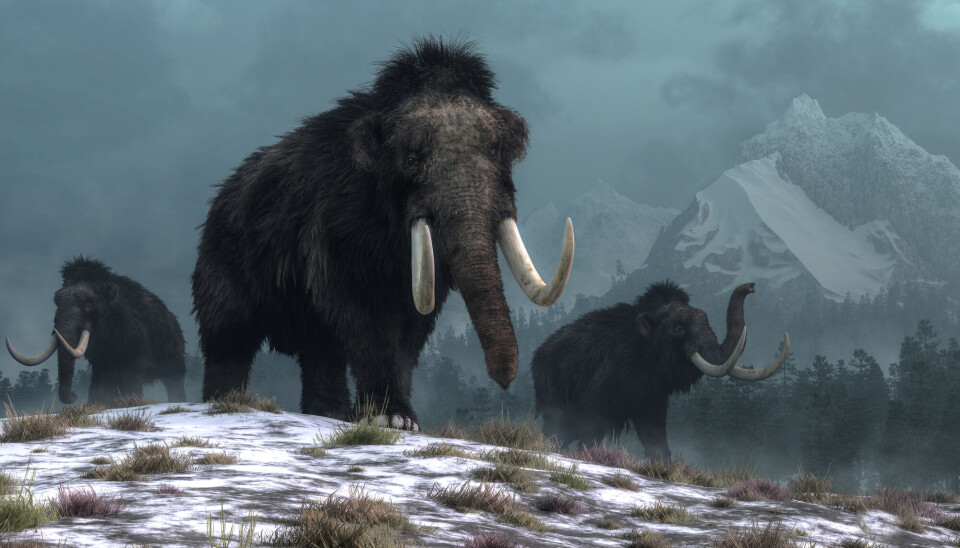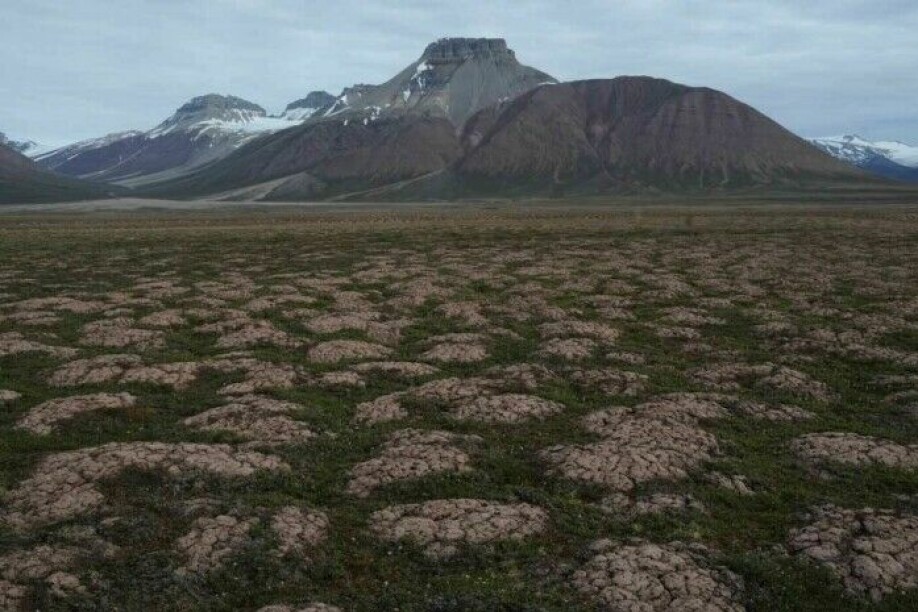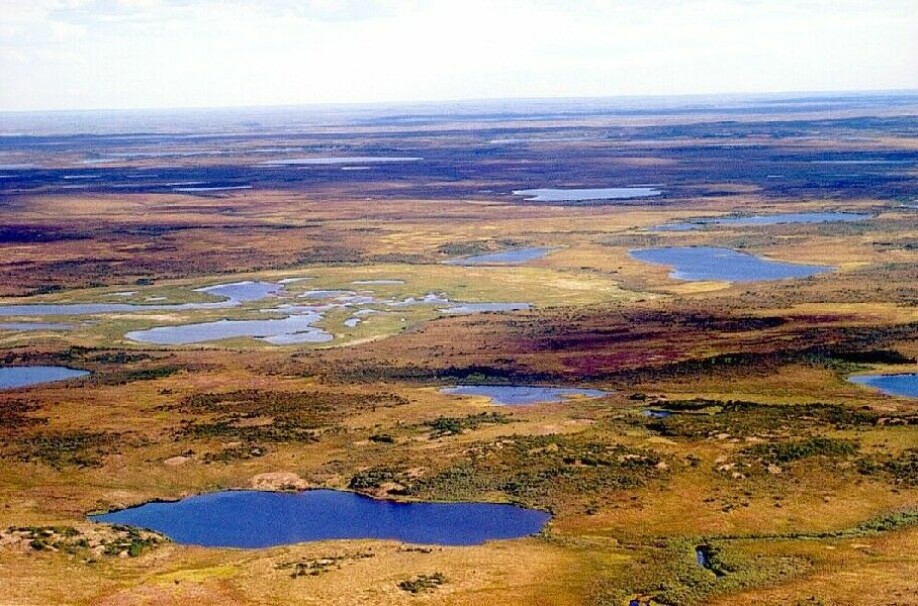
Mammoths and other large animals survived in the north much longer than previously believed
New DNA research indicates that the climate, not humans, led to the demise of these large creatures.
The Earth’s climate has changed over the last 50,000 years. It was coldest during the ice age maximum, when the ice was most widespread. Beginning 10,000 years ago, the climate warmed.
An international group of researchers has now investigated how plant and animal life changed during this period. Researchers at UiT The Arctic University of Norway and the University of Bergen have been part of the effort.
The vegetation in North America, the North Atlantic and Siberia was fairly similar until the peak of the last ice age, the researchers found.
When the climate warmed, it got wetter and the plant life changed.
The study suggests that hunting was not the main reason for the demise of the mammoth and other northern megafauna.
Mammoths, bison and woolly rhinos survived several thousand years longer than was previously believed. Humans lived side by side with these animals before they became extinct.
Samples from 74 locations
The new study was recently published in the journal Nature.
The researchers took sediment and permafrost samples from 74 sites in the Arctic, including Norway, Siberia, Svalbard, North America and Greenland.
Analyses of the DNA in the samples showed them what kind of plants lived in different regions and at different times over the last 50,000 years.
The researchers also found DNA from animals in the samples. The DNA was from hair, faeces and skin cells that ended up on the ground.

Herbaceous plants and grass dominated
“What we see is that if we go back to before the maximum of the last ice age, there was a more homogeneous steppe tundra. There was similar vegetation in Alaska, Canada and Siberia,” says Inger Greve Alsos.
Greve Alsos is a professor of biology at UiT and was one of the researchers involved in the study.
From 50,000 years ago and up to the ice age maximum, the landscape in the north was characterized by treeless steppes and tundra with permafrost and shrubs.
Herbaceous plants and grass dominated. Plants in the wormwood genus were common. Trees and aquatic plants were mostly found at lower latitudes due to the cold, dry climate.
Change in vegetation
Plant richness increased up to the ice age maximum at 26,000 to 19,000 years ago, when the global average temperature was 7 degrees colder than today.
“It was a big change, of course. Plant diversity declined, and large areas were completely frozen,” said Greve Alsos.
As the ice age drew to a close, there were more trees, shrubs and woody plants. Willows and birch became more widespread. The diversity decreased among herbaceous plants. By 10,000 years ago, the ice age was over. Heather and coniferous forests became more common.
But these changes differed, depending on location. The vegetation became more diverse in the different Arctic areas. There was a lot of forest in North America, for example. The vegetation in northwest and central Siberia remained a steppe tundra, although some cold-adapted species were replaced by more heat-loving species.
“Wetter vegetation types spread around the Atlantic as the ice retreated,” Greve Alsos said.
- RELATED: Why does the avocado have such huge seeds? Meet the plants that have lost their enormous partners
More snow
The changes in vegetation probably had an effect on the large grazing animals, such as the mammoth, horse, bison and woolly rhinoceros.
“We saw that when the vegetation changed, there was a decline in megafauna,” Greve Alsos said.
“When the ice began to retreat, it got warmer. And when it got warmer, there was also increased precipitation,” she said.
More rainfall also meant snow.
“Much of what we saw probably related to snow cover, that the snow was too deep. We can’t measure snow cover, of course, but we can see from the plants we found that it got wetter. There were plants that are adapted to a protective snow layer,” she said.
Mammoths survived in arid areas of Siberia
The researchers found that the megafauna survived in the north far longer than what has previously been thought.
Based on skeleton finds, the most recent evidence of mammoths on the mainland of Eurasia were 10,700 years old. The most recent discovery from Alaska is 13,800 years old, according to the study.
However, the new findings show that mammoths survived in North America at least until 8,600 years ago.
They survived even longer in Siberia. DNA from the Taimyr Peninsula in north-central Siberia shows that mammoths lived there as late as 3,900 years ago.
“Parts of Siberia retained a productive steppe tundra,” Greve Alsos said.
The researchers wrote that the steppe tundra resulted from Siberian high-pressure systems, which are very cold, dry air masses over Siberia. This prevented ice from forming in the region during the ice age maximum and resulted in drier conditions afterwards.
This may be the reason why mammoths lived the longest in these areas.
“Other areas had different vegetation to which the mammoth and other megafauna may not have been so well adapted,” Greve Alsos said.

No support for extinction by hunting
Consequently, mammoths didn’t disappear as soon as humans began to live in the same areas.
“Given that humans occupied northern Eurasia sporadically from at least 40,000 years ago and continuously after 16,000 years ago, the late-surviving Taimyr mammoths potentially encountered and co-existed with humans over at least a 20 000-year interval,” the researcher wrote.
The researchers write that this finding doesn’t support the ‘overkill’ or ‘blitzkrieg model,’ which says that humans exterminated megafauna quickly when they came to a new place. Humans' arrival in new areas apparently matches quite well with when these large animals went extinct.
“There is evidence that there have been mammoth hunts, but this doesn’t indicate that people arrived, and suddenly the mammoths died out. They coexisted for thousands of years,” says Greve Alsos.
- RELATED, an article produced by UiT: Ancient DNA reveals gene flow between Eurasian and North American horses
Climate change seems to have been most important
The researchers also found that horses, bison and woolly rhinos lived in the north for several thousand years later than was previously believed.
They found rhino DNA that was 9,800 years old and DNA that showed horses were found in Alaska 7,900 years ago. Bison survived in Siberia until at least 6,400 years ago.
The researchers ran a model to see what affected the distribution of various animals, including hares, wolves, caribou and megafauna. They found no effect of humans on the distribution of animals.
The results thus indicate that climate and vegetation changes were the most important reason why the megafauna in the north became extinct.
“Our results indicate that the extinction came when the last pockets of the steppe-tundra vegetation finally disappeared,” the researchers wrote.
It got wetter, warmer and the steppes were overgrown with forest or replaced by tundra vegetation.
UiT contributed a large DNA library
The researchers at UiT contributed a large plant DNA database to the study.
The reference library was created from the plants in the herbarium at the UiT Tromsø Museum. The library contains more than 1,500 plant genomes that have been used to identify the DNA found in the soil samples.

Exciting study
Michael D. Martin is an associate professor at the NTNU University Museum and studies the evolutionary history of plants and animals using genetic material.
He did not participate in the study.
“I think it is a super interesting study and a monumental effort to collect and analyse environmental DNA samples from so many places,” Martin wrote in an email to sciencenorway.no.
He explained that the researchers used a method called shotgun metagenomic sequencing. This allows scientists to identify DNA fragments from the entire genome of a species, and not just a few markers. The use of this technology is new on such a large scale.
“The study also generated a collection of more than 1,500 plant genomes for reference material, something that is unheard of,” he wrote.
“The molecular evidence for late surviving mammoth populations in North America and Siberia is also super interesting and equally exciting,” he said.
Lots of information out there
The new study shows the kind of information that can be extracted from DNA from the environment.
“There may not be many fossils available to track the decline of the ice age megafauna. This study shows that in the future, DNA from the environment can be used to survey these changes at an unparalleled resolution,” Martin wrote in his email.
Greve Alsos agreed that the new study represents an advance in methodology.
“It shows how much information is out there just waiting for us to find it. There is so much information out there about the effect of climate change on both plants and animals,” she said.
Translated by Nancy Bazilchuk
Reference:
Yucheng Wang et.al.: Late Quaternary dynamics of Arctic biota from ancient environmental genomics. Nature, 2021.
———
Read the Norwegian version of this article at forskning.no
































